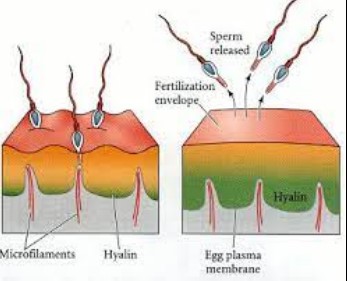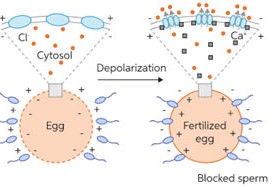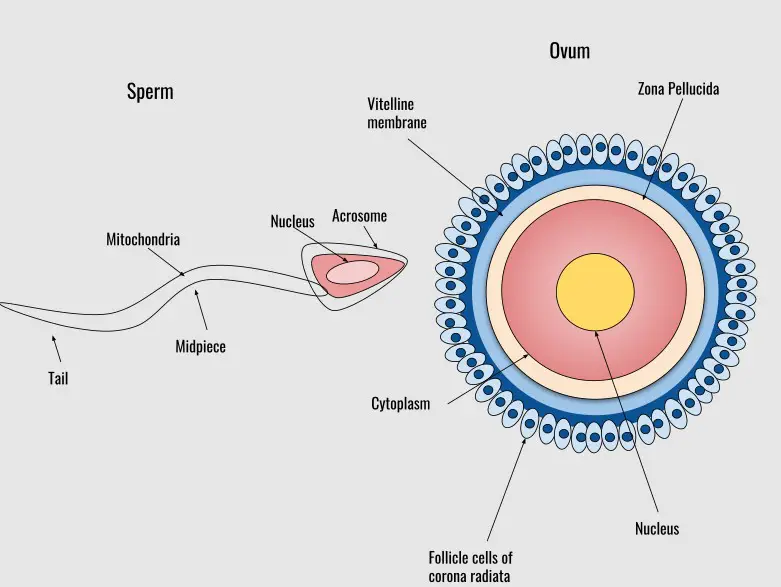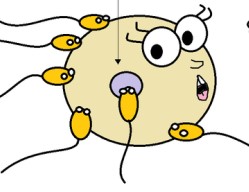Fertilization marks a monumental point in the journey of life, a process where a single sperm cell unites with an egg to form a new organism. This complex event is not just about the meeting of two cells; it’s a gateway to the beginning of a new life. Fertilization, however, is governed by precise biological mechanisms that ensure the correct genetic information is passed on to the next generation. Among these mechanisms, monospermy and polyspermy stand out as critical factors that influence the success and viability of the fertilization process.
Monospermy, the fertilization of an egg by a single sperm, is the biological norm and essential for the genetic stability of most organisms. In contrast, polyspermy, where an egg is fertilized by multiple sperm, typically leads to abnormal development and is usually lethal to the embryo. Understanding the difference between these two outcomes is crucial for comprehending how reproductive success and failure are determined at the cellular level.
The distinction between monospermy and polyspermy is not just a matter of academic interest. It has profound implications for developmental biology, fertility treatments, and our understanding of evolutionary mechanisms. These processes ensure that genetic material is transmitted accurately from one generation to the next, highlighting the precision and intricacy of biological reproduction.

Basic Concepts
Fertilization Process
Fertilization is the union of a sperm and an egg, a crucial step in the reproduction of most organisms. This process transforms two separate entities into a single, viable entity capable of developing into a new organism.
How Fertilization Occurs:
- Contact: A sperm cell makes contact with an egg cell.
- Penetration: The sperm penetrates the outer layer of the egg.
- Fusion: The genetic materials of the sperm and egg fuse together.
Role of Sperm and Egg:
- Sperm: Contributes half of the genetic material and initiates fertilization.
- Egg: Provides the other half of the genetic material and the cellular environment necessary for the embryo’s development.
Key Terms Explained
Definition of Monospermy:
Monospermy is the fertilization of an egg by one sperm. This ensures the resulting embryo has the correct number of chromosomes, essential for normal development.
Definition of Polyspermy:
Polyspermy occurs when an egg is fertilized by more than one sperm. This typically leads to developmental abnormalities due to the excess genetic material.
Monospermy
Ideal Scenario
Monospermy is not just common; it’s the ideal scenario for fertilization. It guarantees genetic stability by ensuring that the embryo inherits a precise set of chromosomes from both parents.
Mechanisms Involved
To maintain monospermy, several blocks to polyspermy are in place:
- Fast Block: A rapid change in the egg’s membrane potential.
- Slow Block: The hardening of the egg’s outer layer, preventing additional sperm from entering.
These mechanisms involve complex cellular and molecular events that ensure only one sperm can fertilize the egg.
Polyspermy
When It Occurs
Polyspermy can happen under certain conditions, such as when the blocks to polyspermy fail or in certain species where multiple sperm entering the egg is part of normal fertilization.
Consequences for the Embryo
The consequences of polyspermy are usually detrimental. The embryo may end up with too many chromosomes, leading to abnormal development and often, failure to develop entirely.
Types of Polyspermy
External Polyspermy:
- Occurs when multiple sperm fertilize an egg outside the organism’s body.
- Common in species that spawn eggs and sperm into the water.
Internal Polyspermy:
- Happens inside the organism’s body.
- Can be a result of specific reproductive strategies or failures in the egg’s defense mechanisms.
Comparative Analysis:
- Monospermy: Ensures genetic stability, leading to normal development.
- Polyspermy: Often results in abnormal development due to excess genetic material.
Comparative Analysis
Monospermy vs. Polyspermy:
- Genetic Stability: Monospermy ensures it; polyspermy jeopardizes it.
- Embryo Development: Monospermy leads to normal development; polyspermy often leads to developmental failure.
- Frequency: Monospermy is the norm in most species; polyspermy is generally an anomaly or part of a specific reproductive strategy.
Biological Implications
The impact of these fertilization processes on embryo development and the long-term effects on species cannot be overstated. Monospermy is vital for the continuation of species by ensuring genetic consistency, while polyspermy, unless part of a specific reproductive strategy, generally poses a threat to healthy development.

Factors Influencing
External Factors
Environmental conditions play a significant role in influencing both monospermy and polyspermy. Temperature, pH levels, and the concentration of ions in the surrounding environment can all affect the viability of sperm and eggs, as well as the success rate of fertilization events.
- Temperature: Fluctuations can impact sperm motility and egg viability, affecting the likelihood of successful fertilization.
- pH Levels: Extreme pH levels can damage both sperm and eggs, potentially leading to fertilization failures or abnormal development.
- Ionic Concentration: The presence of certain ions in the water or bodily fluids can influence the activation of eggs and the mobility of sperm.
Internal Factors
At the cellular level, genetic and cellular factors play critical roles in determining the outcome of fertilization. The genetic compatibility of sperm and egg, along with the health and condition of these cells, can influence whether monospermy or polyspermy occurs.
- Genetic Compatibility: Certain genes can influence the ability of sperm to penetrate the egg, as well as the egg’s capacity to block additional sperm after the first has entered.
- Cellular Health: The age of the egg and sperm, along with any cellular defects, can significantly affect fertilization outcomes.
Preventive Mechanisms
Against Polyspermy
To prevent polyspermy and ensure the health of the embryo, several natural mechanisms have evolved in organisms. These mechanisms are crucial for maintaining genetic stability and ensuring the viability of offspring.
Mechanisms Include:
- Fast Block to Polyspermy: A rapid change in the egg’s membrane potential immediately after the first sperm enters, preventing additional sperm from fusing.
- Slow Block to Polyspermy: The release of enzymes that harden the egg’s outer layer, creating a physical barrier against further sperm entry.
Role in Reproduction:
These mechanisms are not just about preventing polyspermy; they’re integral to ensuring that fertilization results in viable, healthy offspring capable of further development.
Case Studies
Examples in Nature
Monospermy and Polyspermy in Different Species:
- Sea Urchins: Often used as a model for studying fertilization, sea urchins exhibit a clear fast block mechanism to prevent polyspermy, highlighting the evolutionary importance of monospermy.
- Amphibians: Some frog species show instances of polyspermy as part of their normal fertilization process, with mechanisms in place to regulate the number of sperm that can successfully contribute to the zygote.
These examples demonstrate the diversity of reproductive strategies across the animal kingdom, with each species having evolved mechanisms suited to their environmental conditions and reproductive needs.
Research Findings
Recent Studies have shed light on the intricate details of fertilization, offering new insights into the mechanisms of monospermy and polyspermy.
- Molecular Basis of Polyspermy Prevention: Research into the molecular signals involved in the slow block to polyspermy has revealed complex interactions that prevent additional sperm from entering the egg.
- Impact of Environmental Stressors: Studies have shown that changes in environmental conditions can influence the rates of monospermy and polyspermy, suggesting a delicate balance maintained by organisms to adapt to their surroundings.
Implications:
These findings have profound implications for understanding reproductive biology, the evolution of fertilization mechanisms, and the potential impacts of environmental change on reproductive success.

Frequently Asked Questions
What causes polyspermy?
Polyspermy is often caused by the failure of the egg’s mechanisms to prevent the entry of more than one sperm. This can occur due to various factors, including abnormalities in the egg’s outer layer, timing issues in the fertilization process, or environmental stresses that interfere with normal fertilization. The consequences are typically fatal for the embryo, leading to an imbalance in genetic material that disrupts development.
How do organisms prevent polyspermy?
Organisms have evolved sophisticated mechanisms to prevent polyspermy and ensure healthy development. These include physical and chemical barriers around the egg, such as the hardening of the egg’s outer layer after the first sperm penetrates, and molecular signals that block additional sperm from entering. These preventive measures are vital for maintaining genetic stability and ensuring the viability of the embryo.
Why is monospermy important for reproduction?
Monospermy is crucial for reproduction because it ensures that the resulting embryo has the correct number of chromosomes. Fertilization by a single sperm allows for the proper combination of genetic material from both parents, leading to the development of a genetically stable organism. This balance is essential for the healthy growth and development of the embryo, ultimately influencing the survival and reproduction of the species.
Conclusion
The intricate dance of fertilization, governed by the principles of monospermy and polyspermy, is a testament to the complexity of life. These processes not only underscore the precision required for successful reproduction but also highlight the delicate balance that nature maintains to foster the continuation of species. Understanding the differences between monospermy and polyspermy illuminates the challenges and triumphs within the microscopic world of cellular biology, offering insights into the fundamental mechanisms of life.
As we delve deeper into the realm of reproductive biology, the significance of these processes becomes increasingly apparent. They are not merely steps in the journey of life but pivotal moments that define the beginning of existence. The exploration of monospermy and polyspermy opens doors to new discoveries, enhancing our knowledge and appreciation of life’s profound complexity and the mechanisms that ensure its perpetuation.

